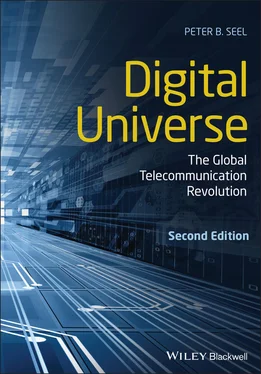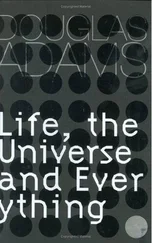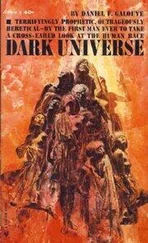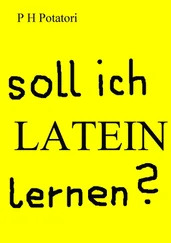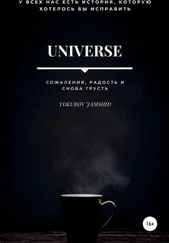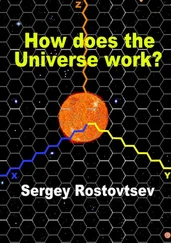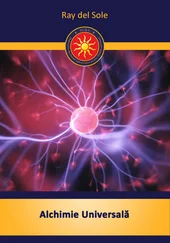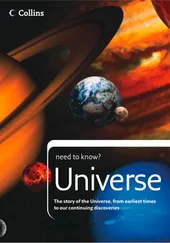The Social Media Universe
The routine daily use of online social media did not exist in 2005, as Facebook did not allow anyone without an . edu email address to join until 2006. In fact, telecommunication users prior to 2005 would not understand the specific meaning of any of these now-commonplace social media and online communication terms:
| AstroturfingBoomerangCancellingChatbotClickbaitDoxingFOMOFriendingGaslighting |
Geotag#HashtagInfluencerInstagrammingNewsjackingPhishingRegramSelfie |
StanSubtweetThreadTrollingUnfriendingUpvoteUXVlog |
| See the glossary in the front of this book for definitions to these commonly used words and technical terms and abbreviations in this text. |
Technology writer Clive Thompson credits the advent of Twitter as a new social media tool in 2006 with the arrival of a new “Age of Awareness.” 4Twitter was criticized at the time by some of the technocenti as a superficial communication tool due to the then-140-character limit on a single message. Thompson noted that author Tim Ferris referred to Twitter at the outset as “pointless email on steroids” and commented sardonically that Ferris today has 1.54 million Twitter followers. The user who did the most to highlight the power and reach of Twitter was the 45th president of the United States, Donald J. Trump. He discovered early in his career as a reality television host between 2004 and 2015, that he could bypass what he termed the “fake” mass media by reaching out directly to his online fan base through Twitter. While political commentators have noted that Twitter is perhaps not an ideal communication tool for conducting foreign policy by a head of government, its usage in the United States has expanded dramatically since its inception in 2006. Twitter’s 126 million daily users now include citizens from all walks-of-life and include media celebrities, companies, athletes, politicians, and media executives. 5
Thompson states that the rise of Twitter in 2006 “represented a massive shift in the way that we pay attention to one another. The status update took off and we entered the era we still inhabit: the age of awareness.” 6While emails are often lengthy and infrequent, Twitter messages were brief by comparison and status updates could be posted by the hour. Following someone on Twitter (or other social media sites as they emerged after 2006) was like engaging in a stream of consciousness with that individual. Thompson said that, “It was like hearing them talk out loud all day long,” a trait that critics of then-president Trump complained about – during his first impeachment hearing in the US Senate in 2019, he posted a record 142 Tweets criticizing his trial. 7
Trump’s Twitter usage notwithstanding, it has provided a voice for the disenfranchised in both positive and negative ways, as hashtags became shorthand for communication campaigns worldwide. The #blacklivesmatter and #metoo movements used social media to mobilize their activists and communicate their urgent messages to wider publics. In line with the Tao of Technology theme cited throughout this book, that the positive and negative effects of communication technologies are inseparable , the global use of social media provides numerous examples of negative antisocial uses. The #gamergate shaming of female e-game experts and the adoption of social media as a communication tool by hate and terrorist groups worldwide has fueled angst by those who viewed the promise of digital telecommunication as an essential tool to bridge gaps between diverse groups within and between nations.
Another problem with this age of awareness, according to Thompson, is that “it makes us prisoners of the here and now.” In other words, the never-ending 24/7 cycles of constantly “breaking” news and constant social media posts provide little respite from the tidal wave of information accessed on our mobile devices and at home. He cites Canadian media theorist Harold Innis as predicting that modern communication technology would make society “‘present-minded’ and unable to focus on anything except what is happening right now .” 8(see Chapter 7for more on Innis, telecommunication, and empires). Anyone who has social media alerts transmitted to their mobile phones or their office computers is intimately familiar with the distractions they cause. Table 1.1 charts the global diffusion of social media since 2002.
Table 1.1 The global diffusion of social media since 2002
| Site |
Year widely available online |
Founders |
Active monthly users (2020) |
Employees (2020) |
| LinkedIn * |
2002 |
Reid Hoffman, Allen Blue, Konstantin Guericke, Jean-Luc Valliant, Eric Ly |
772 million |
15,800 |
| Twitter |
2006 |
Jack Dorsey, Evan Williams, Noah Glass, Biz Stone |
321 million |
4,600 |
| Facebook |
2006 |
Mark Zuckerberg, Eduardo Saverin, Andrew McCollum, Dustin Moskovitz, Chris Hughes |
2.7 billion |
52,534 |
| WhatsApp ** |
2009 |
Jan Koum, Brian Acton |
2 billion |
** |
| Instagram ** |
2010 |
Kevin Systrom, Mike Krieger |
1 billion |
5,275 |
| Snapchat |
2011 |
Evan Spiegel, Bobby Murphy, Reggie Brown |
238 million |
2,734 |
| Tik Tok |
2016 |
ByteDance – Zhang Yiming |
800 million |
6,500 |
| *LinkedIn was purchased by Microsoft in 2016 for $26.2 billion. **Now owned by Facebook. WhatsApp employees are included in Facebook’s count. |
These digital tools have provided the potential for a type of super-human intelligence due to the relatively easy 24/7 online access to all types of information. The connected human being in this “Age of Awareness” can have intellectual “super-powers” by knowing which questions to ask – and when to ask them. This type of omniscience has been a dream of humans since the advent of fire as a cooking technology. It came into clearer focus with the invention of instantaneous communication in the form of the telegraph and the telephone. Knowing where and how to search for information by asking carefully targeted questions will be a key aspect of what it means to be an educated person.
In this era of universal online access to all types of information, becoming an “educated” human being is much less about memorization of facts, than it is about understanding how to interpret the “tidal wave” of data generated by our searches and requests. It will also involve learning how to separate facts from fiction in this new age of intentional disinformation. One month after the 2020 US election won by Joseph Biden as president and Kamala Harris as vice president, 68 percent of those who voted for Donald Trump believed that the election was stolen from him. 9After more than 60 judges ruled in multiple election-related lawsuits that there was no fraud committed, Trump still insisted that he was the rightful winner. These repeated assertions in social media were a contributing factor to the assault on the US Capitol by an angry mob on 6 January 2021 after Trump urged them to do so during a nearby rally. Many were captured on mobile phone videos shouting “stop the steal” as they smashed windows and doors and rampaged through the Capitol building, halting the proceedings of the House of Representatives and the Senate who were certifying Biden as the winner of the election. The rioters had been goaded at the rally to halt the Congressional proceedings by the president, his son, Donald Trump Jr., and his attorney, Rudolph Giuliani. The rally had been promoted for weeks in advance utilizing social media, especially through the president’s Twitter page, @realdonaldtrump. Trump had urged his supporters to attend and protest the alleged theft of the election stating, “Be there, will be wild!” 10After the riot caused seven deaths and extensive damage to the capitol, social media sites such as Twitter, Facebook, Instagram, and Snapchat took the extraordinary step of permanently shutting down Trump’s sites, claiming that they were inciting violence. 11As privately owned communication channels, they had this right, but multiple observers noted that this was like closing the barn door after the horses have escaped. They stated that social media sites such as Twitter and Facebook should accept responsibility for their roles in helping far-right groups in organizing the assault on the Capitol and spreading the falsehoods that motivated the rioters. Journalist Giovanni Russonello summed up this critique in an opinion article published five days after the riot:
Читать дальше
